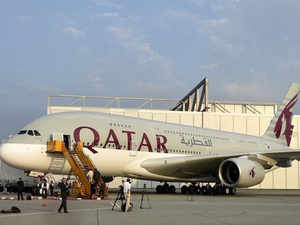Monetary turbulence for Indian Airports Authority
, ET Bureau|
Updated: Sep 28, 2017, 11.01 AM IST

Even as the Indian government pushes regional connectivity by opening up new airports and developing defunct ones, majority of fully running international airports are still getting small shares of the large air travel growth story that India currently enjoys.The difference is starker on the international sector. Barring Delhi and Mumbai, 18 of India's top 20 airports have single digit market share percentage of international passengers that fly in and out of the country.
“The numbers are extremely skewed,“ said Habeebullah Ubaidullah, a Tamil Nadu based independent consultant. “For example, Gulf carriers ferried more than 50% of India's international traffic last year. But two-thirds of them flew to just four or five top airports in the country. How will other airports earn and grow?,“ he asked.
Another example is points of call. An Indian airport is notified as a point of call for foreign carriers when deciding bilateral air traffic rights. While as many as nine civil aviation authorities in the Gulf are allowed to operate their carriers in Mumbai and Delhi, Kolkata is designated to just three, while airports such as Trichy and Mangalore get zero.
On the domestic front too, 17 of India's busiest airports after Delhi, Mumbai and Bengaluru account for single-digit percentage of traffic share. The Airports Authority of India has been making massive losses on a majority of the airports that it operates. ET looks at the numbers.
“The numbers are extremely skewed,“ said Habeebullah Ubaidullah, a Tamil Nadu based independent consultant. “For example, Gulf carriers ferried more than 50% of India's international traffic last year. But two-thirds of them flew to just four or five top airports in the country. How will other airports earn and grow?,“ he asked.
Another example is points of call. An Indian airport is notified as a point of call for foreign carriers when deciding bilateral air traffic rights. While as many as nine civil aviation authorities in the Gulf are allowed to operate their carriers in Mumbai and Delhi, Kolkata is designated to just three, while airports such as Trichy and Mangalore get zero.
On the domestic front too, 17 of India's busiest airports after Delhi, Mumbai and Bengaluru account for single-digit percentage of traffic share. The Airports Authority of India has been making massive losses on a majority of the airports that it operates. ET looks at the numbers.







